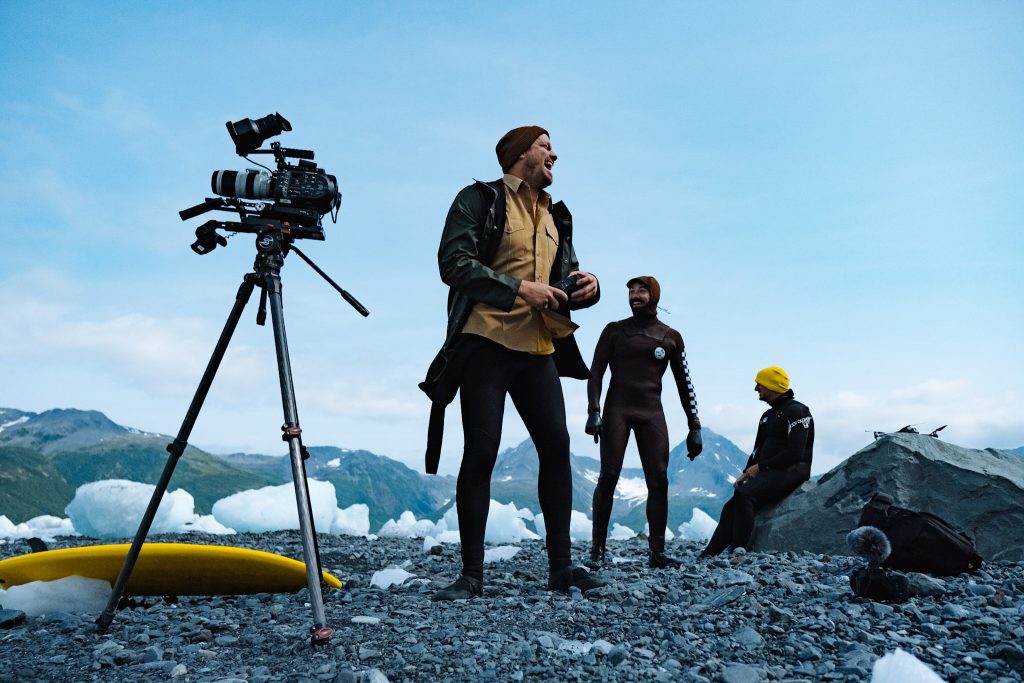 A behind the scenes look at the series that became impossible not to love, with Dylan Graves and Dave Malcolm—the minds behind the madness.
A behind the scenes look at the series that became impossible not to love, with Dylan Graves and Dave Malcolm—the minds behind the madness.
In the age of a constant stream of content, for better or for worse, it’s hard to find a niche, to stand out against the daily flow of videos gracing your feed. Weird Waves not only broke the mould, they smashed it right out of the park, creating a mould of their own. Haven’t seen the series? Out of quarantine and don’t have that much time? Just check out episode one based in the Great Lakes to get an idea of what we are talking about.
So why? Why the success?
Well, it’s our belief that simple documentary filmmaking, done well, will always have its place, and Weird Waves does that perfectly. The simplicity. Surfing the weirdest waves across the world does have a certain hook to it, that’s for sure. But it’s the communities that Weird Waves tap into that make it what it is, from the South West of the UK, to the Great Lakes of the US, to Nigeria and further afield, there are communities that live and breathe these weird waves. Because of the natural way in which our host Dylan so effortlessly connects with them, it’s the featured communities that really end up being the hosts. In an age of web edit after web edit of what could be viewed as self-obsessive surf footage, Weird Waves is something truly special and feels more relevant than ever.
To learn more, we got on a FaceTime call (the joys of quarantine!) with director of photography Dave Malcolm and Dylan Graves to get the low down.
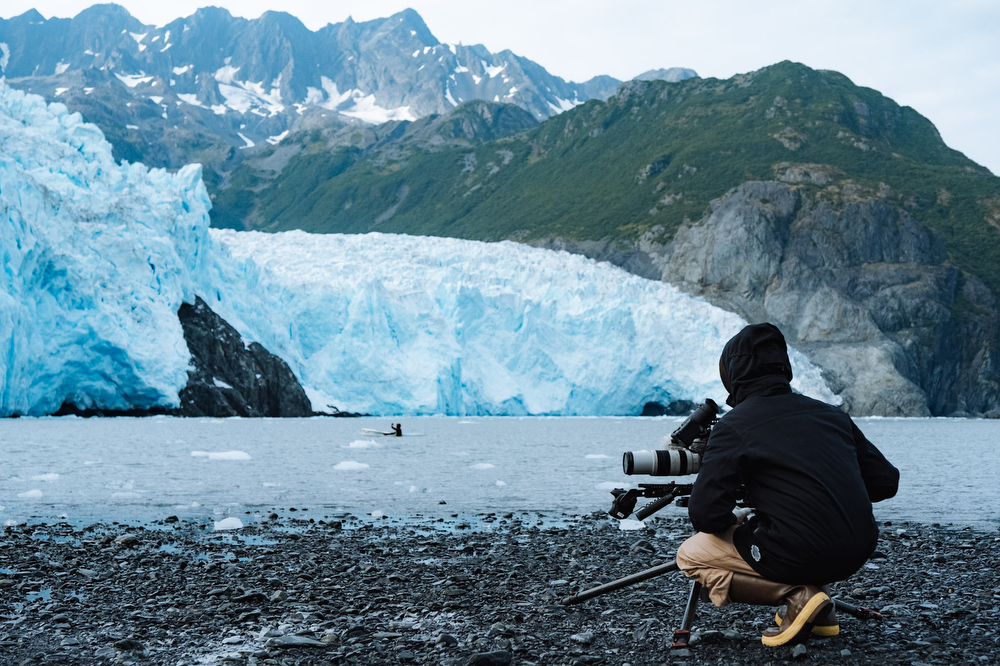
WT: So how did Weird Waves come about?
DG: It really came from a conversation at Vans. We were, and still are, such fans of novelty and novelty waves to the extent where we geek out on them. I think the original concept is about nine years old. We had been working on it for a while. It was Dave (Malcolm) who came on board and made it what is is today, his experience of working at Vice and in documentary stuff really took it to a whole other level. It’s down to his vision and knowledge.
WT: And you produce all the episodes?
DM: Absolutely, it’s pretty much us head to toe on this thing. I think if we showed up to places guns blazing with the full crew it just wouldn’t be the same. When it is just two of us it’s such a small footprint that we can meet the community and get on board with their programme really easily.
DG: That’s where Dave just excels as he has that experience working on larger productions but is also really mindful of how surf communities are, and how people react when you stick a camera in their face! Most surfers don’t want to deal with that so I think we have found a good balance as to how to navigate that. The communities themselves are what drives the success of Weird Waves.
WT: So these relationships with the communities featured, did you have a black book of weird wave spots you wanted to go to, or was there quite a lot of research needed? Did people reach out to you once they had seen the first season?
DG: Well, all of the above! I guess I had a wish-list of places that I thought that would be cool to go and check out. The first river wave I ever surfed was in Wyoming—I was showed a clip of it by a friend at Vans and was keen to go and check it out—just for the experience. I was totally blown away by everything there, from the people I met and the whole vibe of the trip, that from that point on I was really interested to check out more river waves and the scenes surrounding them. The first season was I guess about these different spots and how they contrasted, and after that we had a ton of people reach out—mainly from places we wanted to go which was cool.
DM: When we first started we had the locations in mind and the budget all set and good to go, thinking we would make these web episodes of a few minutes in length—your standard surf clip stuff. Business as usual right? So we head to the Great Lakes and meet Burton and were just so blown away by Burton, by the waves, by the crew, that we knew at that moment we were onto something much bigger, like, “This is the structure!” It’s about these people—these communities.
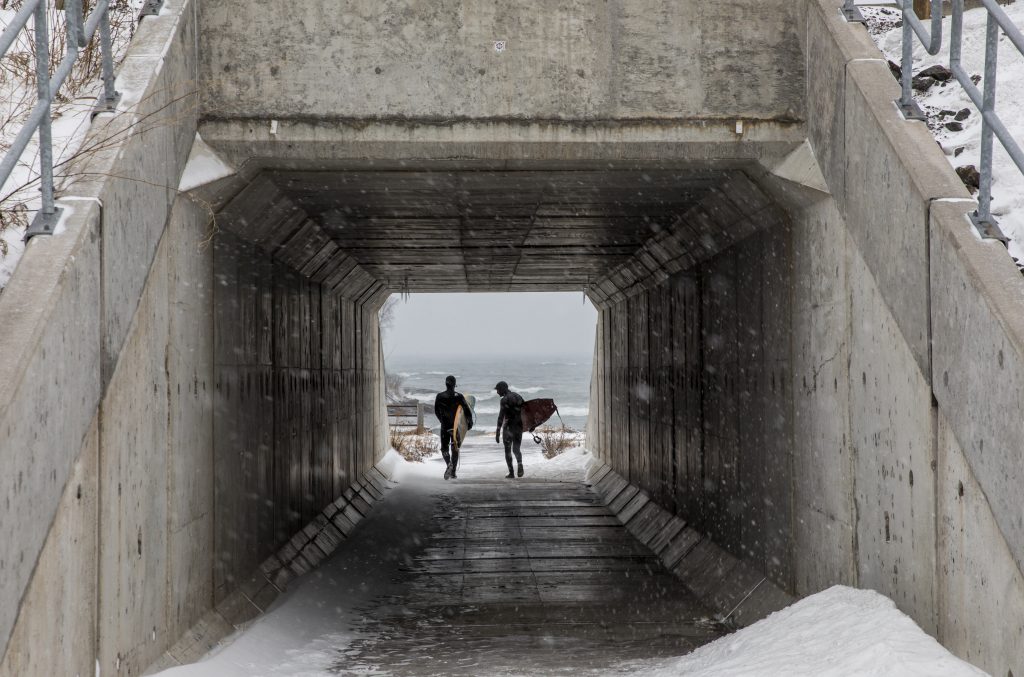
WT: Burton is one of a kind. Was that the moment where you thought there must be more Burtons the world over? [Burton is a highly excitable UPS employee and Great Lakes surfer featured in episode one.]
DM: That’s exactly it—Burton is one of a kind. But the whole series is full of one of a kinds. Whether they are super knowledgable, or supporting a community or just a full-on wildcard. Each person that Dylan has met has been fantastic and true co-hosts in every sense of the word. They have also been extremely welcoming, especially I guess now that we have a little following it can be like, ‘Hey your spot might get a little blown out because of this’, but people have been so psyched to share what they have, surfing and growing their community.
WT: Talk us through that camaraderie, as in the ocean it seems like it’s every man for himself most days…
DG: The camaraderie has been the best part for me and something that is totally different to paddling out at your local spot. There is such a strong bond around those waves, like when we went for breakfast with the entire crew after surfing the Severn Bore…that RULED. Surfing then eating with the entire lineup. Wow. Would you ever go get breakfast with EVERYONE who was out at Lowers? I think in the rivers there is a natural sort of order to it, and also people aren’t taking it that seriously. They are in it for the love of it, not that normal surfers aren’t, but there just aren’t the same amount of people in the water to cause any friction in river surfing–it hasn’t gotten to the point of surfing yet with the sheer volume of people in the water. When you are surfing in the ocean, you see a set coming and the whole line up thinks, “That’s fucking mine!” Whereas in a river, it’s just there–an infinite resource. It’s also such a new scene that I feel it really bonds people, it hasn’t been corrupted. It’s such a pure scene.
Surfing is the wild west—there are rip currents, people in the water, different levels of etiquette that people bring to the water. That side of things in river surfing is just nonexistent.
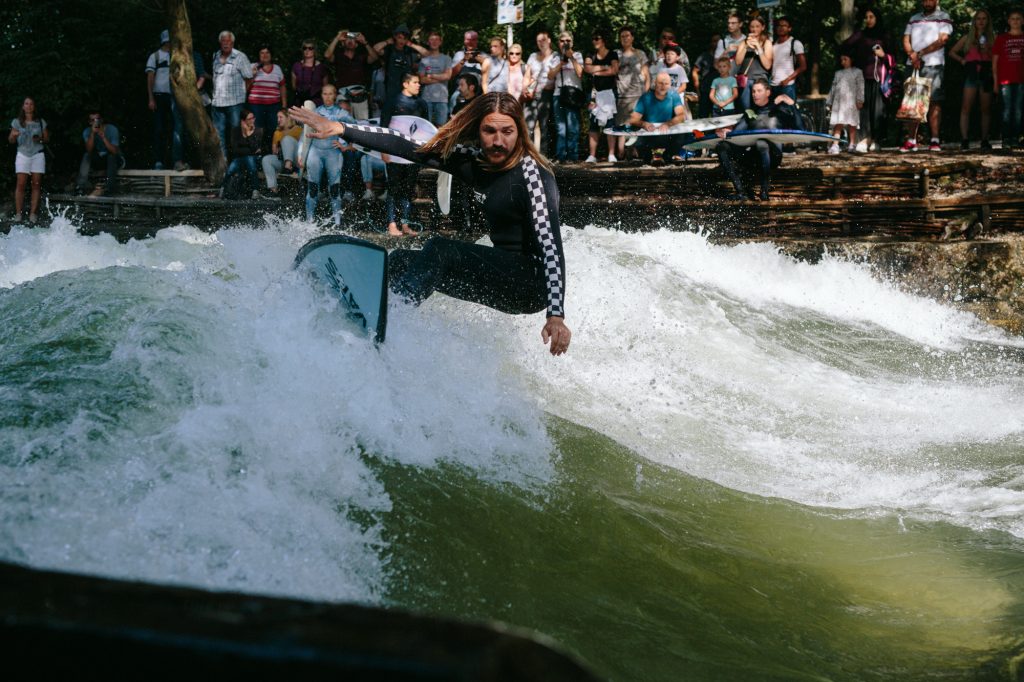
WT: What’s been the biggest challenge?
DG: At the beginning for me it was working out how to be a host. I didn’t want to be that OTT guy like “What’s up! We are here!” I was nervous in front of the camera in that sense, surfing and just being me is fine but hosting and putting so much of me into it in that specific format was really daunting for me.
DM: On production we’re dealing with so many variables. With the ocean most spots are the same. With Weird Waves there are a million things going on and especially with tidal bores, if we only have one day left and one wave to make it all work, it can get quite stressful. We’re figuring everything out as we go along. Every day is such a learning experience. I regret not filming all the evening conversations showing how we try to plan the next day, as that side is really interesting. Maybe season three, who knows!
WT: Is there one episode in particular where you thought, “This could be a total flop, and we could end up getting no waves at all”?
DM: Every single trip has that moment. In Portugal we had a nationwide fuel strike going on, so it was like ok, the boats are running at half speed so we’re not getting waves here. But that is the beauty with Weird Waves—we can tell that part of the story and we don’t have to get the best waves. With the template we’ve set up it’s all about the journey and what’s actually happening. We want to show the viewer that it doesn’t just run like clockwork. Water levels can be off, the bores can move. It’s cool to tell that part of the story. If it was perfect everywhere it would be boring.
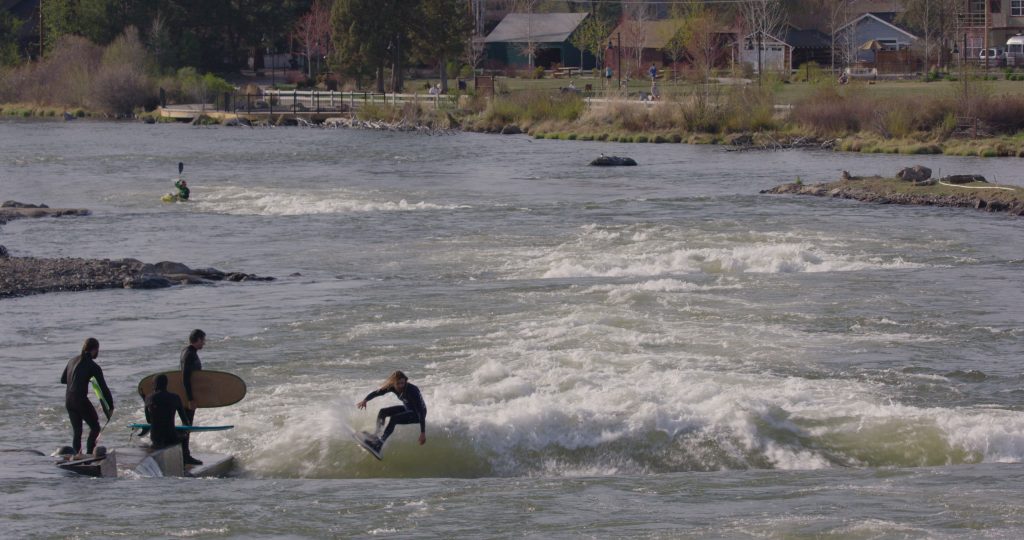
WT: Has it changed your perception of the wider surf community?
DG: Yes, 100%—it’s opened my mind a lot. Mainly in regards to how I see everything in the ocean, from etiquette to everything. I’m only human; I still get a little too close to the fire on certain sessions. You can’t help it sometimes. I try to bring a lot of the vibe from rivers as I am getting older—I think I’m doing better. Being a better person. I would like to think I have more patience, sometimes things really get to me though and I have to speak my mind, haha.
It’s taught me a lot, on the production side of things as well, being in charge of a budget. Pretty much the A –Z of production, so it’s been a great excuse to push myself as a human and learn the most I can—total sensory overload but I feel so grateful to have been so obsessed with novelty to have taken it this far!
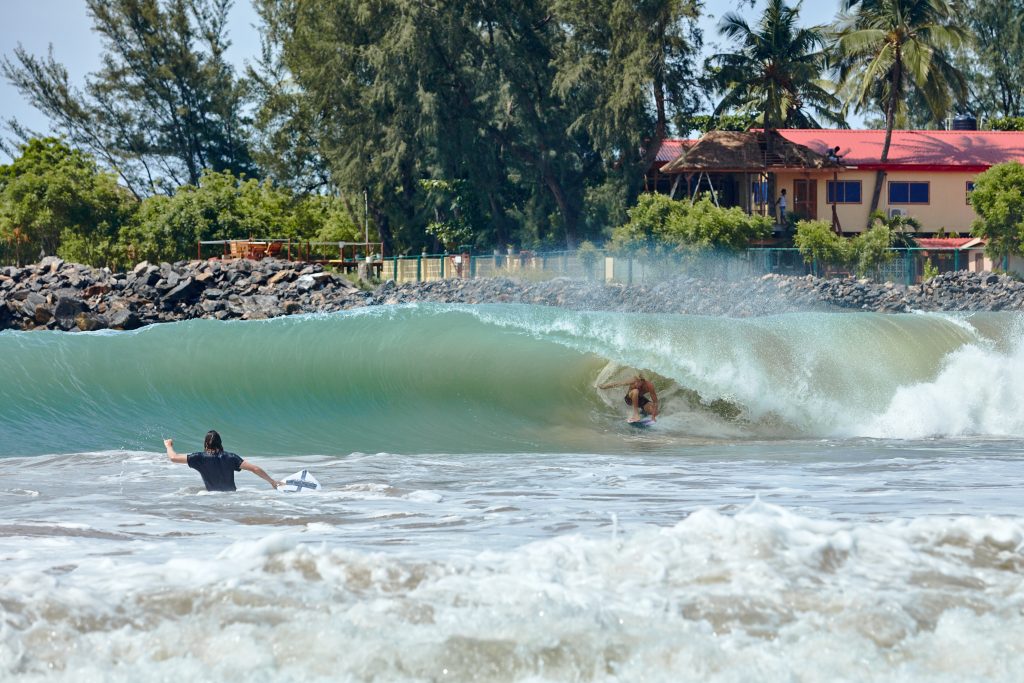
WT: And your surfing?
DG: It’s so challenging; it’s like a constant mini ramp. I feel like it’s made my surfing better! It’s completely the opposite in terms of where the power is coming from on the wave. In the ocean you are getting pushed forward and in rivers it’s kind of pulling you back. You also aren’t reading the wave face, you are reading a water flowing down river—if you see a boil coming in the river you either need to avoid that or know that it will be extremely turbulent—kinda comparable to if you hit a boil in the ocean but the whole ride is sort of a constant boil.
It’s great to learn all this new stuff about surfing which is a subject I thought I knew a ton about. Surfing is such a unique sport because even if you are a ‘good surfer’, the ocean does an amazing job at pointing out your weaknesses…and since starting on this Weird Waves quest, it feels like that times 10, or like I’m learning to surf all over again at some of these river spots. Which is RAD.
WT: So what’s next?
DG: So we are approved for season three. We’re actually meant to be on the first trip right now! But that’s not going to happen…so we’ve been researching a ton. It’s all travel dependent. We could do a just USA version, although I would love to do the season we had in mind. We are in a holding pattern like the rest of world.
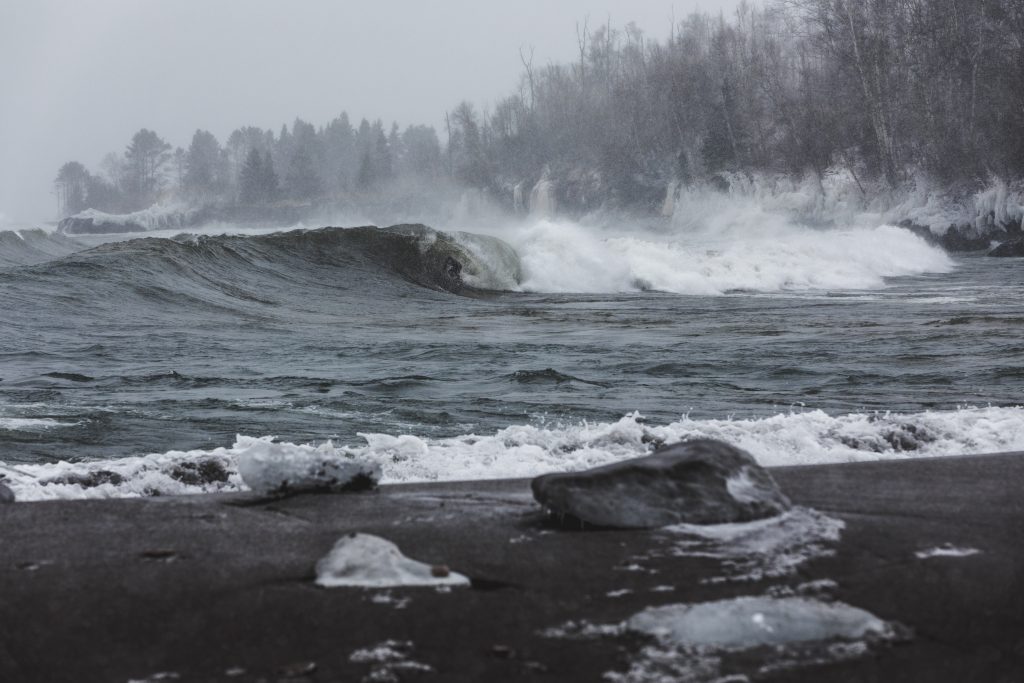
Great Lakes
DG: For every one of these trips our expectations are zero, we have no idea as what we are going into. With the Great Lakes I was ready to just surf waist-high waves and be stoked with that. Even just to stand up and surf the Great Lakes would have been a little victory for me. When we showed up at that bombing left, it was insane. It looked like head-high wind slop. We get down there and I couldn’t even make it out the back, it was way overhead and relentless. It just beat me straight back to the beach. Take one, episode one. I was just on the beach like: What? Did I just get sent in by a lake?
Stream Tour
DG: What they have in Bend, Oregon, is amazing. It’s just such a cool attraction, being able to control the water flow and then the wave with those series of gates. It’s amazing—I can fully see that working in other towns with all the rivers in the world, it’s almost the same concept as a ski resort. In other places it occurs naturally but it’s really fascinating to see how their council have gotten behind it so people can experience surfing on some level—I think a lot of city councils could take note!
Gerry Lopez being there was just insane. We had no idea that he was even around—we linked up with Alex (Lopez, his son) and lo and behold, Gerry was there. Mr Pipeline in Bend, Oregon. We were interviewing Alex and Gerry kept chiming in from downstairs—we were like, come on up! It was so insane surfing the wave with him, I had no idea that he was such an avid river surfer and to have him elaborate on his river experience was just perfect for the journey that we were on. The guy is a visionary on so many levels but I felt really blessed to rap out on a lesser known fact about him.
The Eisbach
DM: The Eisbach is insane, and above all, how hard people shred that thing. We went with Dylan and Tanner—who are solid professional surfers—and the locals are just a league above. It took Dylan and Tanner a whole day to get the swing of it. We definitely had that moment where it’s like, oh yeah this is actually not that easy… They all shred, that community is so solid and has been since the 80s. We had a really fun night out there, the beer halls are the one! To be fair, we were surfing 12 hours a day though, as the locals were so good that we just had to practice all day just to get a part that was anywhere close to them! We did it in the end though, so it was good to go out and get that whole beer hall experience too. Let off a little steam.
DG: The night we surfed it under the floodlights it was raining and definitely had a little bite; I was fine when I was in my suit but seeing the guys surf that all year around, in the snow and ice—I have so much respect for them.
The Severn Bore
DM: This was the hardest one logistically; it was so tough. The boat broke down so we were just on our own trying to work out all the access points. Totally at the mercy of other people offering advice. We had to do so much homework whilst still keeping the local crew sweet. We were a little high profile and got some looks but in the end they were amazing.
DG: Seb Smart was so good to have on this trip. When he rolled up with the green van it was just perfect. None of that was staged. The screaming in the van, rolling down the hill, nearly missing the wave, running out of fuel—none of it. The local crew were quite vibey at the beginning, there are some sections of the bore that are better than others and they didn’t want us to show that—no landmarks etc. However, in the end it was just the best crew, and going to breakfast was one of my favourite memories of the entire series. It was my first experience surfing a tidal bore as well—something I will remember for the rest of my life.
Alaska
DG: By far the most challenging and bizarre wave I have ever tried to surf. It’s so random. Just waiting for ice chunks of a glacier to break. I was tripping out the entire time, two full days staring at a wall of ice. It was such a high possibility that there could have been 0% icefall. I had been in touch with the captain before and he had warned me that we could get out there and nothing would fall. There is no way to predict or measure it. It just is. It’s completely random. He gave us that heads up so our expectations were even lower than normal for the series—which is pretty low. The first day we were out there for eight hours straight. Luckily it wasn’t that cold so it was a nice place to be but you couldn’t go back to the boat so you just had to sit and wait it out! That made that wave the most rewarding. It was only ankle high but there was a lot of magic in it.
Nigeria
DG: AVG and Paul Daniels were the ones who told me about the wave; it just sounded like the perfect place that we should go and visit. To do something different and mix it up from river surfing! We wanted to have different reference points, different styles of waves and with different stories to compare and contrast with our second season. I almost wish we documented just the visa process and logistically getting there, because it was a nightmare—we thought we knew from that what we were getting into. But once we got there it was actually the total opposite. The kids, the wave—it’s paradise. It was such a pure scene, I felt like I was seeing myself as a kid again with these kids. Out there with your friends, having the best time. It was so rad seeing all the different equipment. They are their own reference point for surfing so nothing matters, what you are riding, nor how you ride it. This is their own interpretation of surfing and it’s just the purest scene you could ever experience. Those kids are the stars of the show.
DM: The entry to Lagos was so hectic, we had all our gear and everyone is trying to hustle you for money. You then take the water taxi and you’re there. It’s paradise, just right there around the corner. The waves, the fish markets—the kids all having a good time. It’s rad. These kids aren’t watching any surf clips or IG so it’s so cool seeing their approach and what they feel is right to do with this amazing wedge in their backyard.
Gaso-Line
DG: I think Portugal is the best surf destination you can go to. Even as a tourist it’s just amazing—it’s great food, the prices are fair. I was stoked on this episode from the get-go to meet Ricardo and surf his wave, but mainly to see what he is doing with the community based around a wave that is made by a ferry, it’s insane. It was so easy to click in with the crew, I felt I’d known Ricardo my entire life, that I’d grown up in Barreiro! It was pretty taxing as we would shoot all day, and then we would of course just go for ‘one drink!’…our hosts would charm us into it. I think we were out until 3am or so every night. One of the filmers was like, “Guys I don’t got this!” What’s even better is that wave that Ricardo got right at the end of the episode in the morning was after he had just an hour’s sleep or so, as it was our last night so we were all sending it. Sacrifice!
Wave Pools
DG: People say that they’re so different from the ocean but it’s not all that. They each have their different quirks and waves and ways of being created, just like different parts of reef in the ocean. The part that interested me was how secretive everything was around it. How there is technology involved that people don’t want to give away too much. We both felt that if we could somehow tag along with someone that was creating one that would be our spin on it—to humanise the whole process. There aren’t locals at pools yet, so it was difficult to say, “Ok we’re doing an episode on Wave Pools—what is the community around this?’ But community is the key ingredient of Weird Waves (as in life). Luckily I’d known Cheyne for a while and when I heard he got on board at Palm Springs, I asked if him and the team at the Palm Springs Surf Club would be cool with it, and they were! So that was huge for us and this episode happening. That’s our goal with Weird Waves – it’s all about the people. I feel really proud of that episode as we extended our delivery date and managed to showcase the whole construction process, from breaking the ground to the (semi) finished pool. We were giving the construction guys shit like, “Come on guys! You finished yet?”



